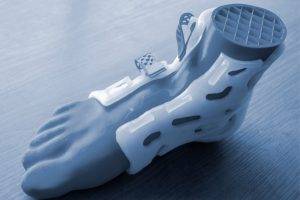Male pattern baldness, also known as androgenetic alopecia, refers to hair loss due to the effect of some genetic and male hormonal factors. It has a reported incidence of 73% in Asia. Read on to find out more about the causes of it, how to detect it, and some ways to manage male pattern baldness.
Though the term “male pattern baldness” sounds as if it occurs only in men, this condition can affect women as well. Male pattern baldness is a common problem in the Asian population, with a reported incidence of about 73% in Asia. A study done in Singapore reported 63% of the population is affected with androgenic alopecia. Research done by Takashima and colleagues found that the prevalence of this condition increases as you age. A high prevalence in the older age group suggests that this condition may be associated with the normal ageing process.
Having discussed alopecia in general in our previous article, let’s zoom in to one of the types of alopecia: male pattern baldness, and find out more about it causes, symptoms, diagnosis, and management options.
Causes and risk factors of male pattern baldness
There are mainly two factors implicated in the causation of male pattern baldness: genetic and hormonal. A strong familial tendency of hair loss has been seen due to the effect of certain genes. Elevated levels of male hormone (testosterone) have been associated with hair loss, though many women with male pattern baldness are found to have normal levels of testosterone.
The cycle of hair growth is divided into three phases: catagen, anagen, and telogen. Among these, anagen is a phase of hair growth. Testosterone shortens this phase and causes progressive loss of tufts of hair from the scalp. Terminal hair is replaced by fine vellus hair.
Symptoms and signs of male pattern baldness
There are several patterns of hair loss. The hair loss usually begins on the temples and the crown of your head. Some people get a single bald spot whereas others have hairlines receding to form an “M” shape. In other men, hairlines continue to recede until most or all of the hair is gone. In females, there can be widening of the central parting. There is a tendency for similar patterns of hair loss in all family members.
Some people develop hair loss in early life whereas others develop it later in their life. In women, some features of increased androgen levels like acne and enlargement of the clitoris can be seen.
Diagnosis of male pattern baldness
Your doctor will take a detailed history and do a physical exam to rule out any underlying causes that mimic androgenic alopecia such as fungal infections, nutritional disorders, thyroid problems, intake of medications, use of steroids, and cancer. Generally, men do not require extensive investigation. However, the investigation to rule out androgen-secreting tumours is required for females in the following conditions:
- Sudden onset of hair loss that is rapidly progressing
- Associated with menstrual disturbance
- Associated with recurring acne and abnormal hair growth in other body parts
Management of male pattern baldness
If no underlying cause is found and you are unhappy with your hair loss, your doctor may advise you of some conservative treatment options such as:
- Hairstyle: You can get your haircut in different fashions to hide your hair loss.
- Wigs or hairpieces: These can cover your baldness. Wigs come in different colours, textures, and styles. You can consult your hairstylist to help you choose the suitable type for your hair loss pattern.
- Weaves: Weaves are sewn into your natural hair to increase the density of your hair on your scalp. For weaving, you should have enough hair on your head. The main benefit of weaves is that they always remain with you while doing any daily activities like showering and swimming, but the drawback is that they must be sewn again if you have new hair growth.
Medical Management
Minoxidil is applied topically on the scalp. It stimulates new hair growth and slows down hair fall. Side effects of minoxidil are irritation, dryness, and a burning sensation on the scalp. You should consult your physician if you experience any serious side effects while using this medication such as chest pain, trouble breathing while lying down, swelling of your legs, and rapid heartbeat.
Finasteride is an oral medication that has been found to be more effective in treating your hair loss than minoxidil. This medication works by blocking the conversion of testosterone into its active form, which is implicated in causing hair loss. You have to wait for a few months to a year to see results. If you do not see any results with finasteride even after a year of taking this medication, your doctor may recommend you to stop it. Some side effects that you can expect while taking this medication include hives, itching, swelling of the face or lips, difficulty in having a penile erection, painful ejaculation, and pain in the testis. Finasteride has also been associated with male breast cancer. If you experience a painful lumpy sensation in your breast, get evaluated by your doctor to rule it out.
One caveat that you should note while taking finasteride is that your PSA (prostate-specific antigen) level might be falsely low. The PSA level is a marker used for the screening of prostate cancer. Do inform your doctor and healthcare professional about the medication(s) you are taking when you are getting evaluated for prostate cancer so that they will be better able to interpret the results of the PSA tests for you.
Hair transplant: A hair transplant is the only permanent solution to your hair loss, but the downside of this treatment is that it is an invasive procedure and carries the risk of scarring and infection. In this procedure, your doctor will remove hair from areas of the scalp that have active growth and transplant it to the balding areas.
Counselling: Some people may experience distress, anxiety, and low self-esteem because of hair loss. Seek medical counselling if you are having this sort of problem.
Conclusion
Although known as male pattern baldness or male pattern hair loss, it should be noted that this condition may occur in females as well. Known causes of male pattern baldness are mainly divided to genetic and hormonal causes. Management of male pattern hair loss is similar to other types of hair loss, which includes conservative options (wigs, weaves), medical options (minoxidil, finasteride), or even hair transplant. It is important for counselling to be done as many may experience distress, anxiety and low self-esteem.











